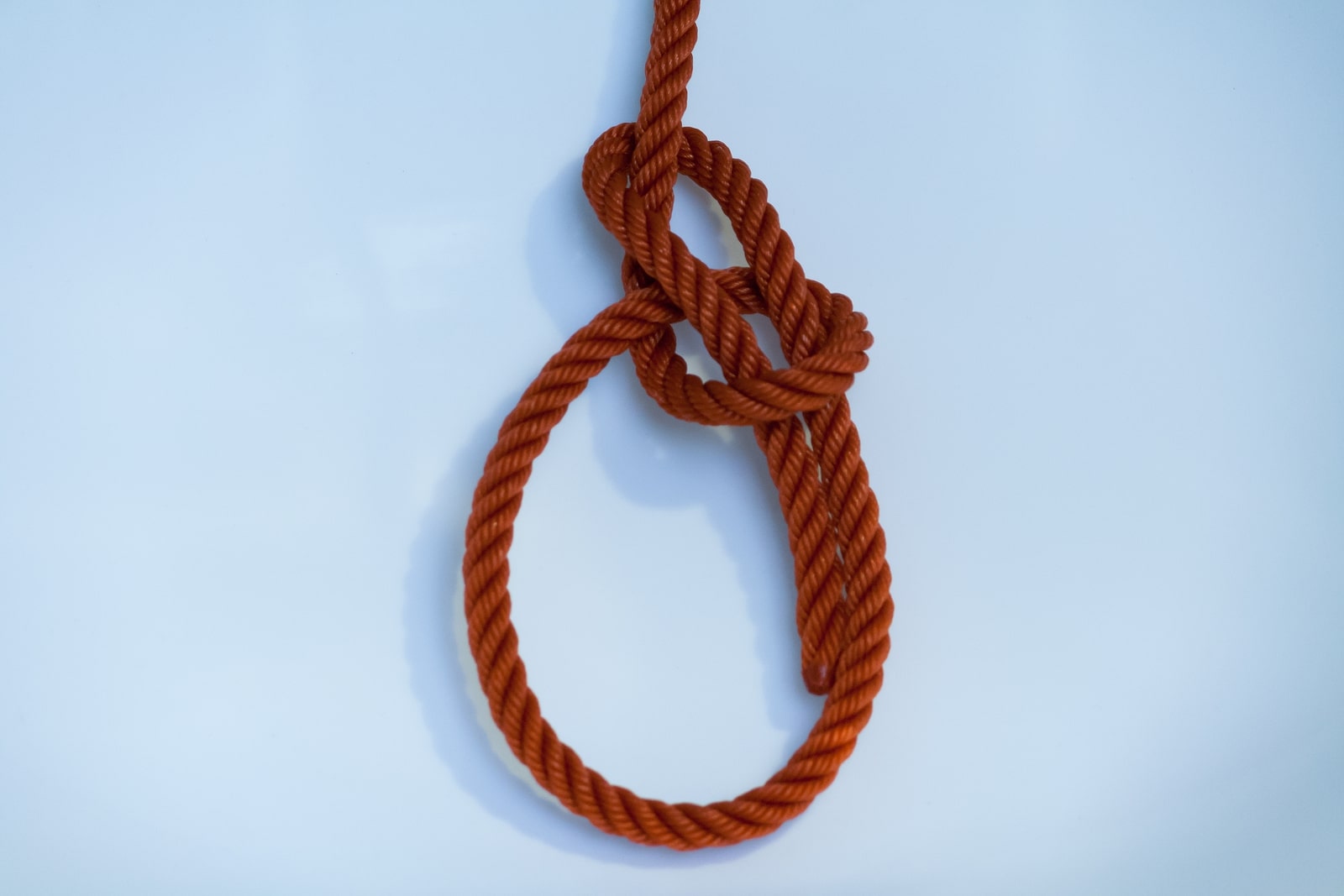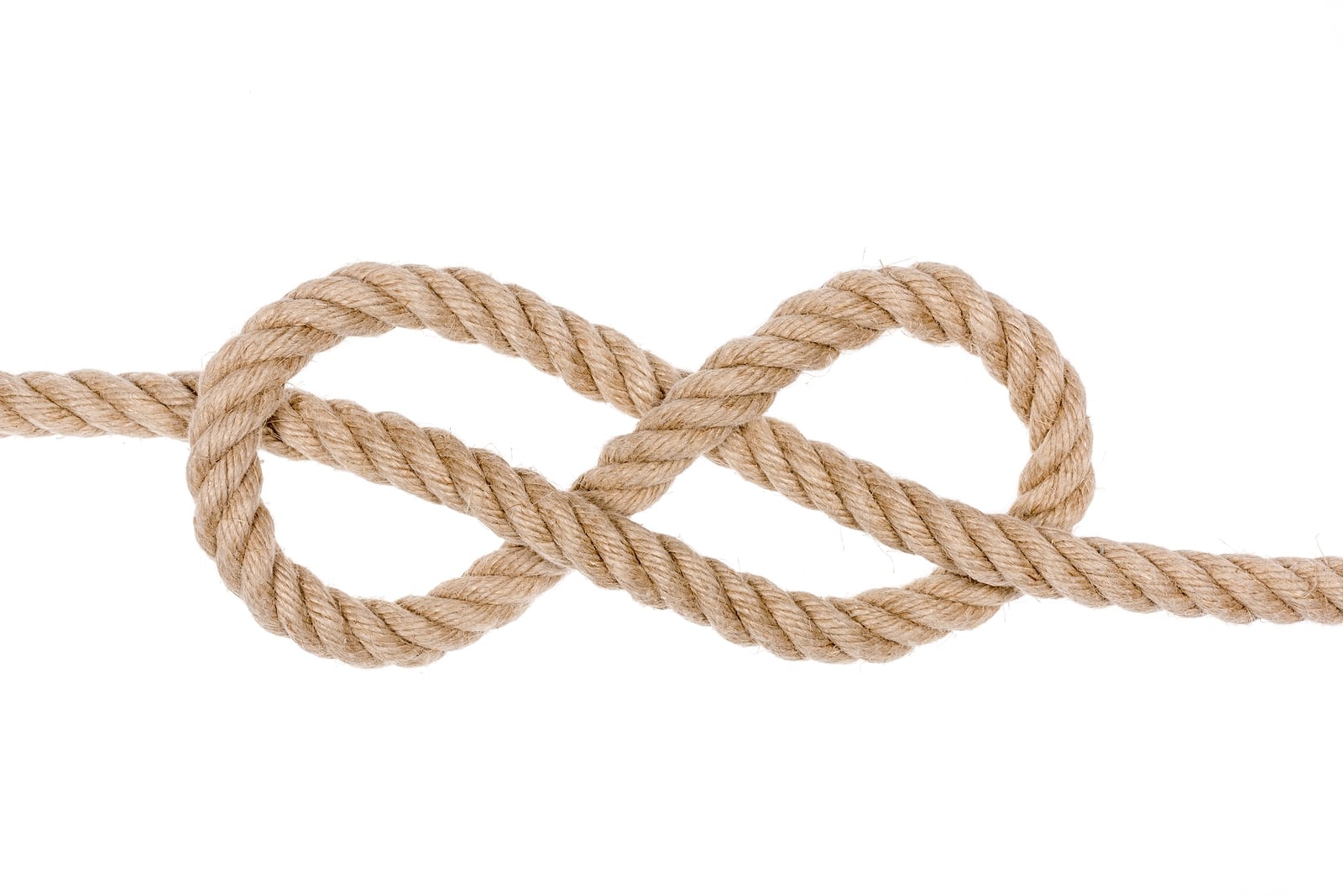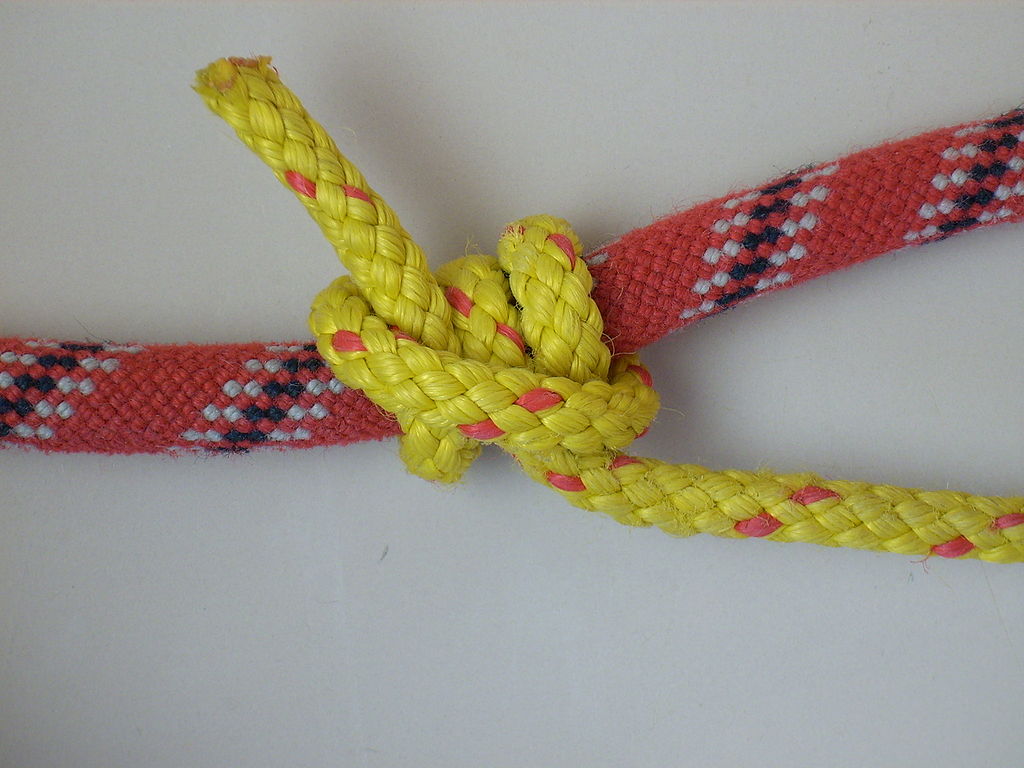- Reef knots
- The Bowline
- Figure-of-eight knot
- Rolling hitch
- Place the rope’s two ends parallel to each other.
- Cross the ropes, placing one rope over the other, then under it, then over again.
- Take the two ends of the rope and cross them over and under each other again, in the same direction as in step 2.
- Pull both ends tight.
- Create a small loop in the rope, leaving enough spare rope to make the larger loop of rope you want to achieve with the finished knot.
- Feed the tail end of the rope through the small loop you made in step 1.
- Take the tail end under then over the standing rope (the part you aren’t moving).
- Then feed the tail end through the loop you made in step 1.
- Pull tight.
- Take the last ten inches or so of the end of a rope.
- Make a small loop.
- Pass the end of the rope behind the rope at the bottom of the loop.
- Then thread the end of the rope through the loop.
- Pull tight.
- Take the end of the rope and pass it over the pole, rope, or rail of your choice.
- Wrap it around the pole/rope (or whatever you’re using) once more.
- Take the end of the rope diagonally across the knot then down, under the pole/rope.
- Wrapping the end of the rope under the pole/rope, pull it up, through the diagonal line you made in step 3.
- Take both ends of the rope and pull tight.
Sailing Guide: The Most Useful Knots and When to Use Them
This guide will detail the most useful knots for sailing, explaining what they are and when to use them.
December 10th, 2018
admin
Here at Flamingo Yachts, we charter yachts from our Largs headquarters.We talk a lot about the beautiful Scottish coastline our customers can explore on board our yachts, but we don’t always discuss the more practical aspects of sailing. Even though skippers on our yachts must hold relevant RYA or equivalent practical skipper qualifications, it’s still important for the crew to be safe and prepared. This is why we think that anyone else setting foot on a yacht should have a few good sailing knots under their belt. This guide will detail the most useful knots for sailing, explaining what they are and when to use them. In this guide, we’ll discuss the following knots:
Helpful note: while we’ve tried to explain how to tie each knot as clearly as possible, it’s difficult to follow a knot-tying tutorial without visual aids or a video. If you need additional assistance, we highly recommend taking a look on the Royal Yachting Association YouTube channel.
Reef Knots

The reef knot is perhaps the most well-known knot; it’s very strong and incredibly useful. You can use a reef knot to bind a rope to an object by tying together two ends of the rope. This is a very strong knot and you tie it using the following method:
Often, when there’s too much wind, you’ll use a reef knot to tie a sail in place after you’ve reduced the size of the sail by “reefing” it. Many people use a reef knot to connect two separate pieces of rope together, but if these ropes are different sizes, there’s a good chance that they will slip apart, so it’s best not to use a reef knot for this purpose.
The Bowline

The bowline is a clever knot used to create a fixed, secure loop on the end of a piece of rope. This fixed loop is useful for a range of sailing-related tasks, such as fastening a mooring line or making a large loop to use to rescue someone in the water. Make the loop big enough and the person can put their arms through it and you can pull them out of the water. The bowline is also sometimes called a boiling knot and you tie it using the following method:
Figure-of-Eight Knot

The figure-of-eight knot is great for stopping the end of a rope sliding out when you want to secure a jib sheet — or for securing anything else, for that matter. It’s essentially a large knot that is easy to tie and easy to untie.To tie a figure-of-eight knot, use the following method:
The figure-of-eight knot is simple enough that you may even be able to understand how to tie it just by looking at the knot itself, so study the image above carefully.
Rolling Hitch

(Image Source: Markus Bärlocher Public Domain Wikipedia)
The last knot we’re looking at is a rolling hitch. This knot is ideal for fastening rope to other ropes or poles, and it’s also great for pulling/lifting lengths of rope or poles. There are countless useful applications for a rolling hitch in sailing as it’s perhaps the best knot for fastening a rope to another rope, or to any kind of pole or rod. It’s also great for tying your fenders on before you moor up at a pontoon or pier. You can tie a rolling hitch by using the following method:
We hope this guide has helped you understand some of the main sailing knots a little better — how to tie them and when to use them. Please read more about us if you’re thinking about chartering one of our yachts and don’t hesitate to get in touch if you have any questions!
Sign up to our newsletter &
Get Great Deals